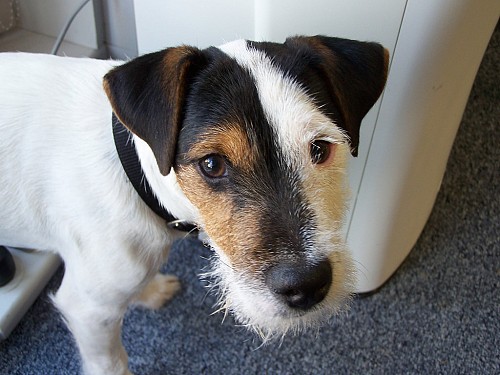How Bedbug Dogs Can Be Amazingly Effective In The War On Bedbugs
Bedbugs. Just the words may make you start to squirm. Itchy, inflamed bedbug bites are annoying and embarrassing. Unfortunately, bedbugs are (still) rampant, no matter how clean you keep your home. They can also be awfully hard to detect, whether in private houses, hotels, dorms, or even upscale secondhand shops. The good news is that entomology scent detection canines (AKA “bedbug dogs”) have an excellent success rate when they – and their human handlers -- are professionally, skillfully trained. If you suspect you have bedbugs, it may be time to call your local exterminator and talk to them about having a bedbug dog sniff them out. Find out more.
Why use dogs to inspect for bedbugs?
Canine inspection is much more efficient than human. Two-footed technicians rely on visual inspection. However, a newly hatched bedbug is smaller than a pinhead and thus very difficult to spot visually. Besides, the human sense of sight is no match for dogs’ powerful sense of smell. For these reasons, two human technicians will take about 2 hours to check a small room; a single bedbug dog can tackle the task in a matter of minutes.
How do they rate in terms of accuracy? Well, the score is approximately as follows. Human inspection accuracy: 25-30 percent. Canine inspection accuracy: 95 percent. The figures speak for themselves.
What breed or type is best as a bedbug dog?
The most important characteristics for a bedbug dog – besides a keen sense of smell, of course – are a calm, sociable nature and willingness to obey. The breeds that tend to be most successful as bedbug inspectors are the same ones traditionally used as hunters, retrievers, or other working dogs, such as border collies, Labrador retrievers, and Belgian shepherds. Some handlers prefer to work with smaller breeds like beagles (which have an extremely acute sense of smell, though their temperament can be a bit excitable) or Jack Russell terriers, because these are less threatening to clients who may be afraid of dogs.
How are dogs prepared to inspect for bedbugs?
Besides a natural aptitude, bedbug inspection dogs must have rigorous training, similar to the program that narcotics and explosive detection K9s undergo. Master trainers spend hundreds of hours teaching their young “students” to recognize the smell of live bedbugs or eggs and to associate locating it with a food treat or verbal reward.
The dogs complete the later stages of the program together with highly qualified handlers. Throughout their careers, many bedbug dogs attend refresher sessions on a weekly or biweekly basis to keep their skills sharp. Third party certification from professional associations like the National Entomological Scent Detection Canine Association (NESDCA) and the World Detector Dog Organization (WDDO) assures the quality of the bedbug dogs’ training and performance. There have been numerous reports of false positive bedbug IDs; a combination of proper training, handling, and certification is the best way to avoid these problems.
How exactly do the dogs inspect?
For optimal results, the occupants should not clean up premises before an inspection. Vacuuming, changing bedsheets, and the like won't get rid of bedbugs but may drive them deeper into hiding. When a scent detection canine is brought in by its handler, the dog will sniff-search the room according to a learned pattern, either circling the perimeter or zigzagging back and forth.
If the bedbug dog detects the scent, it will track it to the source and then alert its handler with a predetermined signal, such as nosing the spot. The handler should verify the alert visually. Each confirmed area of infestation should be marked for follow-up. After its check of the premises, a team of human pest control pros will come in to do a detailed inspection of all marked spots, while the dog is rewarded for a job well done!
Laura Firszt writes for networx.com.
Updated October 29, 2018.
Looking for a Pro? Call us (866) 441-6648

Average Costs
Related Experiences

The Best Pest Control Service For My New Florida Home

Pest Control Got Rid Of Bedbugs From A "Bargain" Headboard




